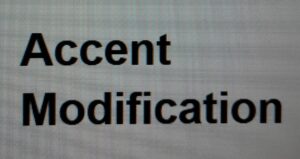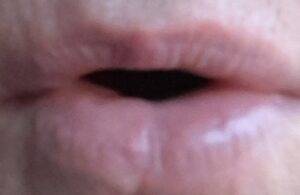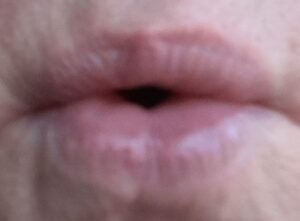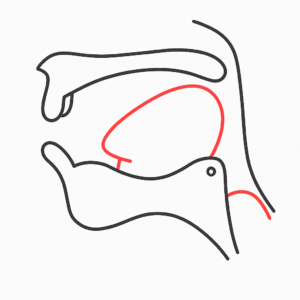The /oʊ/ sound is found in words like ‘road’, ‘coat’, and ‘focus’. It also occurs at the beginning of words like ‘only’ and ‘old’. The /oʊ/ sound is a diphthong. This means it’s one sound made by gliding the tongue from one vowel position to another — starting at [o] and moving higher toward [ʊ]. One common mistake students make when pronouncing this sound is that they produce a single, flat [o] sound without the glide to [ʊ]. The result is a short, clipped sound instead of a long, smooth sound. Let’s look at how this sound is made.
There are two parts to this sound:
- For the first part of the sound, the jaw is open, and the tongue pulls back slightly. The lips are rounded slightly as shown in diagram one.
Diagram 1: starting lip position for the /oʊ/ sound
For the second part of the sound, the jaw closes and the lips round into a tight circle (see diagram 2 below). We tense the lip muscles as we do so.
Diagram 2: ending lip position for the /oʊ/ sound
At the same time, the back part of the tongue rises from a mid-position in the mouth to a higher position (see diagram below).
Do not push your lips forward into a tight circle too early. The lips push forward only near the end of the sound.
Practice this sound in the following words and sentences:
most – This is the most exciting movie I’ve ever seen.
told – I told him to be careful with the glass.
donated, proceeds – She donated all the proceeds from her book sales.
protocol – The nurse followed the safety protocol carefully.
focus – The camera couldn’t focus in the dark.
hoped, notice – He hoped they wouldn’t notice his absence from the meeting.
moment – He paused for a moment to gather his thoughts.
social – They organized a social gathering.
won’t – I won’t let anything ruin my day.
don’t – You don’t need to apologize.
Spend 15 minutes each day practicing this sound in sentences.






